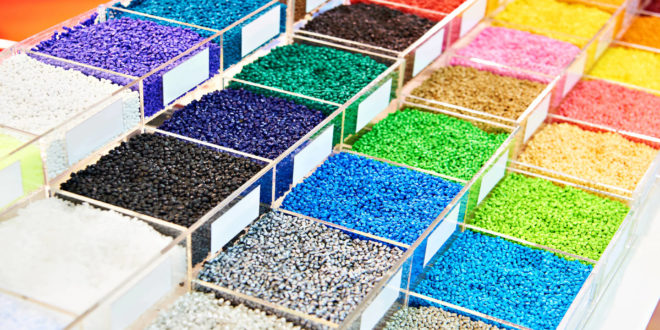Polymers are materials made from substances of large molecules. They’re the building blocks of numerous synthetic materials we use daily, like polyester, nylon, epoxy, polyethylene, and Teflon. These substances can also be sourced naturally or can be extracted from nature. Some of these natural polymers are proteins, silk, cellulose, wool, and even human DNA.
Classifications Of Polymers
Polymers may be classified into the following:
- Linear Polymers: Linear polymers are carbon chains where all carbon-to-carbon linkages are straight. One popular example of this type of polymer is Teflon.
- Crosslinked Polymers: Polymers of this type are created from chemical processes using crosslinking reagents. Vulcanized rubber is an example of a crosslinked polymer.
- Branched-Chains Polymers: Also called branched polymers, these polymers have secondary chains connected to a primary backbone, creating star, H-shaped, pom-pom, and comb-shaped polymers.
Polymers make everyday living more convenient by producing pipes, PVCs, and electrical wires. They are also used as specialty chemicals mixed to create coating materials that help various equipment last long.
Polymers are also present in the medical industry. They are primarily used to make medical containers, dispensing bottles, oxygen tubes, and other standard plastic devices you see in hospitals and medical laboratories.
Many cleaning products and adhesives are also created using polymers. Polymer adhesives, as opposed to screws, distribute the force more evenly throughout the panel. Thus, they are more flexible, resistant to impact, and stronger than other adhesives.
The Harmful Effects Of Polymer Production
As more manufacturers produce synthetic polymers, the risk of environmental damage increases with it. Since most polymers are non-biodegradable, they contribute to land and water pollution. Shores, rivers, and even drainages are full of litter—most of them contain plastics and Styrofoam. Non-biodegradable polymers also contribute to global warming, since burning them produces huge amounts of greenhouse gases.
Because of this, governments and environmental organizations favor the production of biopolymers or naturally sourced polymers instead of synthetic ones. These kinds of polymers are ecologically friendly and still possess the desirable qualities of synthetic polymers.
3 Ways To Produce Environmentally-Friendly Polymers
 Polymers are traditionally made from polyethylene, polypropylene, and polyvinylchloride. However, these are non-biodegradable materials and are known to contribute to a wide range of environmental issues.
Polymers are traditionally made from polyethylene, polypropylene, and polyvinylchloride. However, these are non-biodegradable materials and are known to contribute to a wide range of environmental issues.
Fortunately, several new methods can make polymer production safer for the environment. This includes:
Biodegradable Polymers
Biodegradable polymers, or biopolymers, are produced using a diverse range of raw materials. Sunflowers, corn, grain, potatoes, sugar, and starch can all be utilized to produce biopolymers. These polymers are commonly used to manufacture toys, cleaning supplies, and automobiles.
Biopolymers are biodegradable types of polymers. Since they are manufactured using organic materials, they are easier to process once they are discarded as waste. Using the right procedures, biopolymers can be disintegrated and will decompose safely back into the environment.
Biopolymers are better for the environment in many ways. They are recyclable, decompose easily, and are generally eco-friendly. Additionally, it takes less energy to produce them. Compared to traditional plastics, producing biopolymers can reduce greenhouse gas emissions by 25%.
Reusing Agricultural Waste
Agricultural waste, even though most of them are from organic materials, can still be harmful to the environment. Some examples of agricultural waste are coconut husks, rice hulls, and weeds. However, it could also include animal waste and crop residue (biomass). When these wastes are dumped or burnt, they can contribute to soil, water, and air pollution.
Fortunately, agricultural waste—especially biomass—can now be used to produce biopolymers. Biomass-sourced polymers are found in many household items like skincare products, food packaging, and even electronics.
In-House Recycling Processes For Biopolymers
For many manufacturers, biopolymers can be recycled using in-house processes. This is known as a closed-loop recycling process where leftover plastics are reused by the manufacturing facility itself. The leftover biopolymers are either used to create a new batch or will be used to create a different kind of plastic product. This method helps reduce excess production waste and further conserve energy.
Bottom Line
Studies and research have been going on for years to further improve the production, processing, and treatment of biopolymers. At the same time, these studies continually prioritize the need to protect the environment as the demand for plastic or polymer production increases.
Through advanced research, manufacturers can maximize many alternatives and natural resources instead of using synthetic raw materials that are more harmful to the ecosystem. Aside from utilizing organic raw materials like potato starch and corn to produce biopolymers, agricultural waste can also be recycled to create them. Most of all, facilities can make use of a closed-loop recycling process to avoid production waste.



